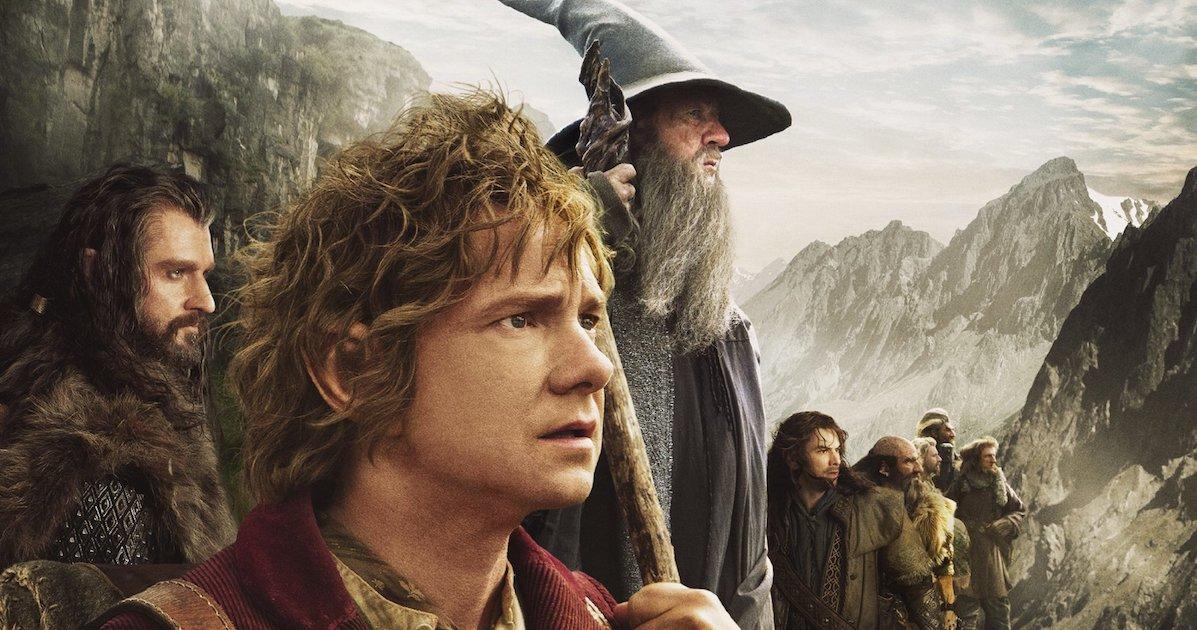
‘Lost’ Versions of ‘The Hobbit’ Movies — What to Know
In recent years there has been a lot of chatter about the “lost” version of The Hobbit trilogy online, but in truth most viewers wouldn’t get much out of these cuts. Director Peter Jackson was lauded for taking risks and pioneering new technology in his films, but his experimentation with high-frame-rate (HFR) filming didn’t go far. Here’s what you need to know about these “lost” HFR versions of The Hobbit trilogy.
Jackson is best known to this day for The Lord of the Rings trilogy, a faithful adaptation of J.R.R. Tolkien’s novels that inspired a generation of filmmakers and fantasy fans. After that success, Jackson initially said he did not want to direct The Hobbit because it would feel like he was competing with the Lord of the Rings films. However, after plenty of behind-the-scenes drama he agreed to direct, and one of his first public announcements was that he would film the movie at 48 frames-per-second (FPS).
that’s a shame. It was filmed in 3D HFR, so we should be able to watch it that way…
— Rick Dude (@slask77) July 16, 2023
On his Facebook page at the time, Jackson wrote that this change would give the films “hugely enhanced clarity and smoothness.” For context, the industry standard in Hollywood is 24 FPS, though some video games and other media go as high as 60 FPS. Jackson’s theory was that the the CGI-heavy world of Middle-earth and the fantastical elements of the story would look better at 48 FPS just as computer-generated video games do.
In this case, Jackson turned out to be wrong. According to a report by Slash Film, the few screenings of The Hobbit: An Unexpected Journey at 48 FPS were panned, with audiences put off by this unusual visual phenomena. Ultimately, the studio fell back on the 24 FPS cuts for wider release and home video. However, Jackson continued to use HFR in some capacity as he filmed the other two Hobbit movies.
Viewers complained that HFR did not make The Hobbit look more advanced, but actually more primitive. The high frame rate reminded them of home movies or soap operas, which makes sense as those are often presented with “image-smoothing” – another hot topic among film buffs online.
This deserves to be lost. I saw it in theaters and it looked horrendous.
— Reutermo (@Reutermo) July 16, 2023
The HFR versions of The Hobbit may not have been released on home video because of technical limitations as well, according to Lost Media Wiki. These kinds of copies of the movie might not be compatible with the average home media set-up, and putting on the shelf could confuse unweary customers. These days it’s nearly impossible to find the HFR versions of The Hobbit, which is why they are considered “lost” by many fans.
Of course, die-hard fans who rewatch the movies again and again are fascinated by this omission and many want a chance to revisit the movie as Jackson first envisioned it. Many believe that these copies should at least be preserved for posterity by fans, collectors and libraries, not just corporations and studios. At the time of this writing, The Hobbit is available to stream on Max at the usual 24 FPS.
0comments
Related:
- Rare ‘The Hobbit’ Book Sells for Huge Sum
- ‘The Hobbit’ Star Secretly Joins ‘Game of Thrones’ Prequel ‘House of the Dragon’
- The Lord Of The Rings And The Hobbit 6-Film Collector’s Edition Box Set Revealed































![iFi's GO Bar Kensei Dongle DAC Supports K2HD Technology With Some Samurai Swagger [Updated] iFi's GO Bar Kensei Dongle DAC Supports K2HD Technology With Some Samurai Swagger [Updated]](https://i0.wp.com/cdn.ecoustics.com/db0/wblob/17BA35E873D594/33FF/45A11/QTXOLJR4xDKSNMMk2WlTgjaIlvSgcYpeU1xJzUwIoYs/ifi-go-bar-kensei.jpg?w=768&ssl=1)
























